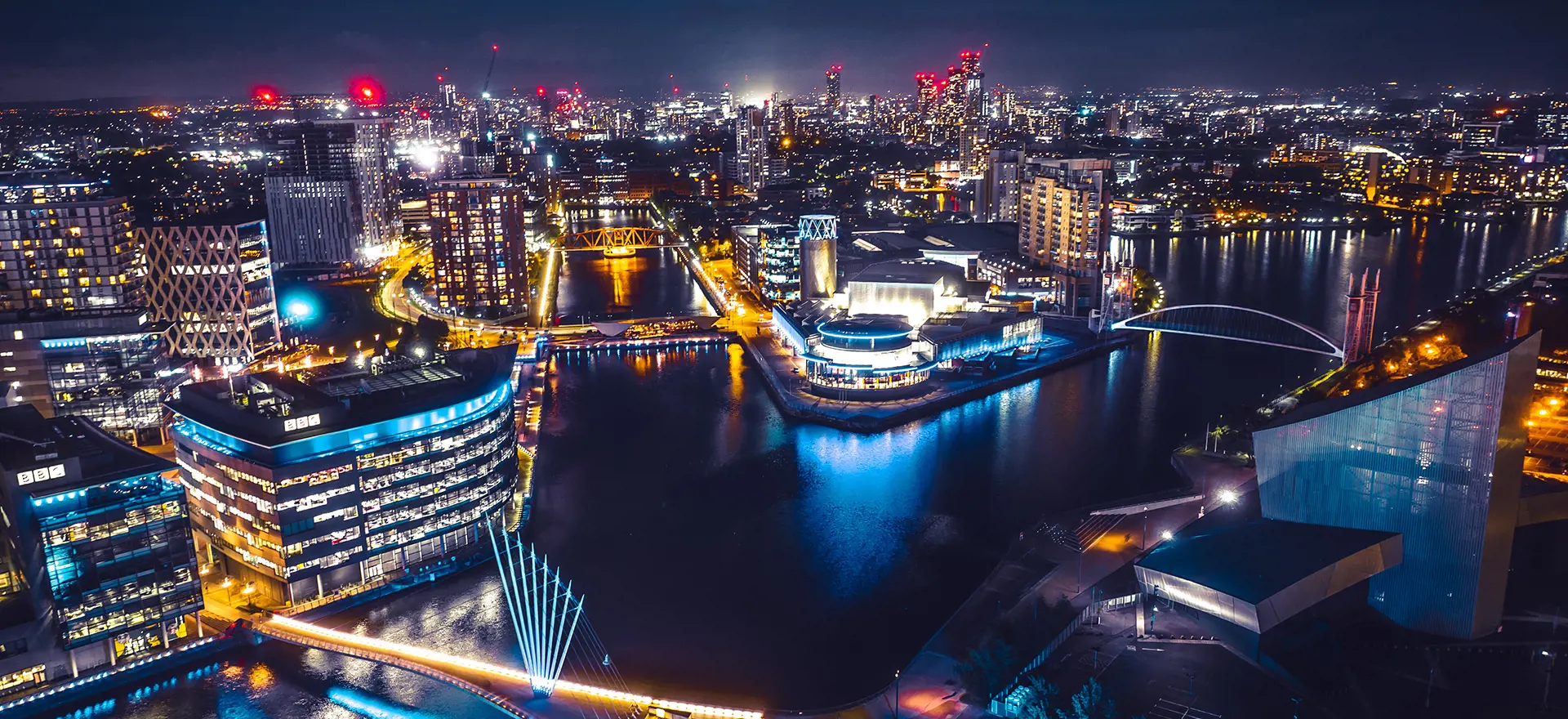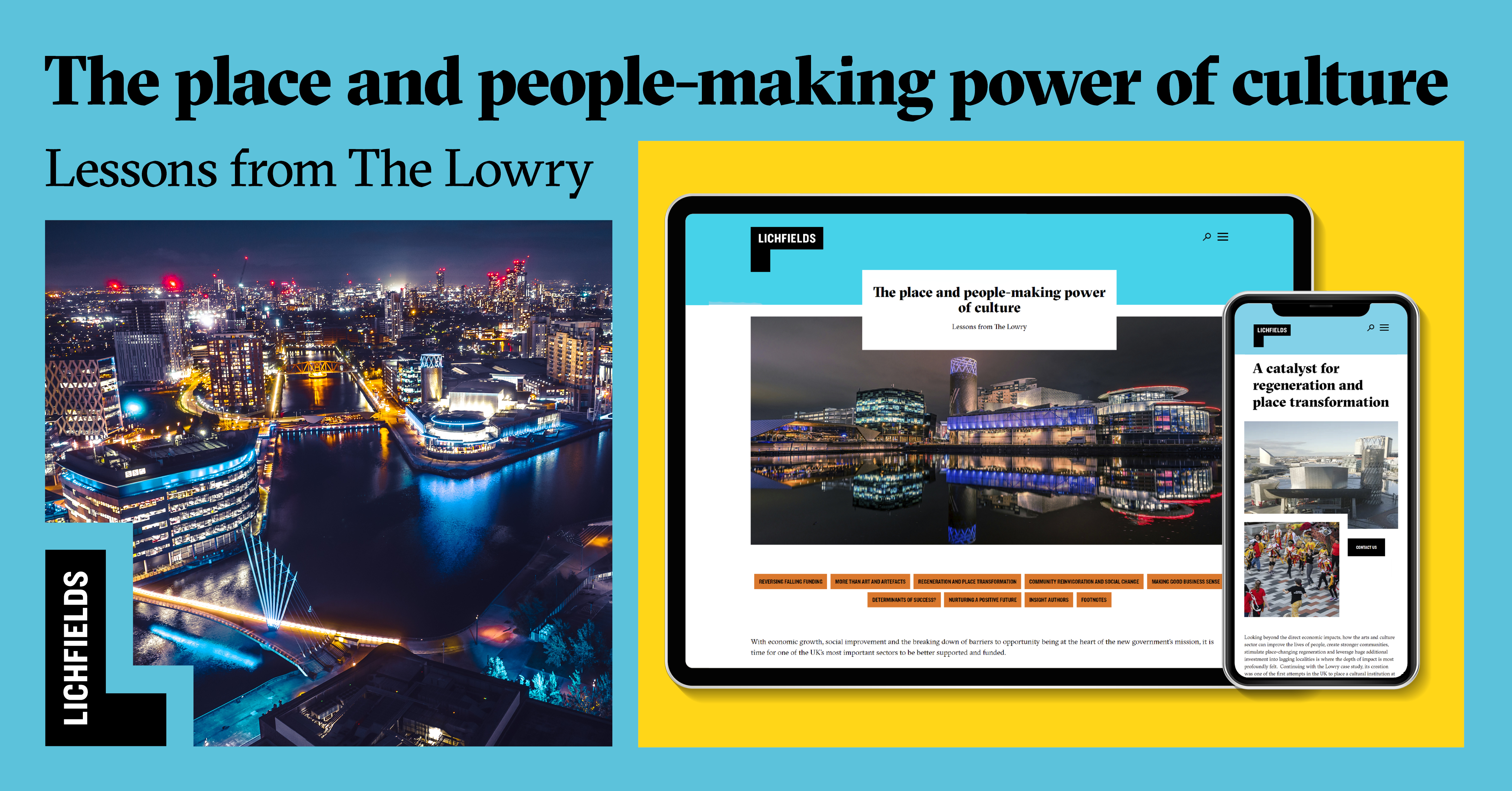There is no doubt that creating the conditions for economic growth whilst improving the lives of people and communities are at the very top of the new Government’s list of primary priorities. As other recent blogs issued by Lichfields highlight, this must include fresh investment in place making, delivery of new housing and the stimulation of economic growth. The latter embraces a strong sector-based approach with much attention already given to the rebirth of an active industrial strategy. Sensibly, the government during its campaigning period also highlighted the importance of supporting many non-industrial sectors which specifically included a commitment to ‘
fire up the engines of our creative economy…for its economic benefit and the enrichment of lives’[1]. Lichfields recently were commissioned to undertake an economic and social impact assessment of The Lowry – a nationally significant theatre, art gallery, cultural and community facility constructed in 2000 as the first major development at Salford Quays in Greater Manchester- a derelict former dockland. Early on in the project we were given the chance to speak with Salford’s Mayor, Paul Dennet, who quickly articulated how fundamental The Lowry and similar institutions are to urban renewal and place transformation:
In my eyes there are three things that make a successful city: accessible public transport, innovation, and culture and creativity.
Culture, creativity and heritage as a cornerstone of successful places isn’t something we hear about as much as we should, but there is indeed a growing body of evidence suggesting that the importance of arts and cultural venues in fostering successful places and communities should firmly be promoted as exemplars The Local Government Association’s report “People, culture and place
[2]” explores across ten case studies how arts, culture, heritage and creativity can help to build community pride, give a sense of shared identity and bring about positive change. A DCMS Committee report from 2022 also explored how
“Place-based approaches to culture can be locally-led and engaging, deliver direct and indirect benefits and support education, pride in place, health and wellbeing”[3].Furthermore, our research for The Lowry demonstrates how the economic and social benefits of such organisations represent exceptional value for money, which is especially pertinent given the new Government’s focus on enabling economic growth whilst increasing access to opportunities for the people that need them the most. To illustrate this point, in 2022/23 The Lowry:
-
Supported 650 jobs and generated around £48 million in GVA;
-
Engaged 22,000 people in educational, employability, volunteering or community focused programmes;
-
Delivered over 3,200 sessions across all learning and engagement programmes, totalling over 6,000 hours;
-
Reached over 10,200 school students in a single year through schools outreach programmes delivering impactful creative education; and,
-
Generated at least £25 million in quantifiable Social Value.
When we combined the quantifiable economic and social benefits generated by the Lowry, we found it had generated a return on investment of around £33 to every £1 of public funding it received in 2022/23. This clearly demonstrates outstanding value-for-money, strongly underpinning the case for solid, stable investment in the sector over the next 5-10 years and beyond.
Most importantly though, The Lowry really feels like the heart and soul of the area, delivering a world-class cultural programme alongside a staggering contribution to the communities that surround it, and catalysing investment confidence and regeneration on a brownfield site in what is one of the most deprived local authority areas in the country
[4].
The Lowry is also far from the only example, with others such as the Tate Liverpool, the Turner Contemporary in Margate, and even The Lowry’s architectural touchpoint – Bilbao’s Guggenheim, spearheading regeneration projects with culture, heritage, creativity and shared experience at their core.
In our insight article and our research for The Lowry, we explore the reasons why arts, culture and heritage venues can have such a powerful economic, social and place-making impact - highlighting the core ingredients for success.
Despite the evidence demonstrating the scale of economic and social impact whilst delivering value-for-money, the UK-wide alliance, Campaign for the Arts found that between 2009/10 and 2020/21, per-person cultural funding has reduced by 50% in England, 33% in Scotland and 36% in Wales (in real terms). They report that there have been 80,000 jobs lost in music, performing and visual arts due to the pandemic, and only 23,000 are projected to return by 2025
[5]. The case is strong to reverse this funding decline and uncertainty,
A substantial opportunity is open for the new government to generate fresh investment and support renewed confidence in the arts, culture and heritage sector. In doing so, organisations like the Lowry should be showcased in terms of the impact they can have well beyond the arts, including substantial on their local economies, their local communities and in stitching places together to become more than the sum of their parts.
I’ve been Mayor for just over 7 years, and I initially had a very strong view on the Quays area, whilst it was an amazing achievement I just wasn’t sure what would make people want to go there. It felt quite corporate, and local communities didn’t see that part of the city as belonging to them in any way. However, I think we’ve really turned a corner and much of what has pushed things in a better direction have been through art, culture and creativity and ultimately spurred on by The Lowry being a part of the place. The Lowry was the catalyst to what we see today, which is one of the best regeneration projects in Europe….It is a force for good and has allowed us to really level up.
Paul Dennett – Major of Salford & Deputy Mayor of Greater Manchester
An executive summary of our report for the Lowry is
available here.
The full report is
available here.
[1] Creative Growth (March 2024): Labour’s Plan for the Arts, Culture and Creative Industries. Labours-Arts-Culture-Creative-Industries-Sector-Plan.pdf[2] https://www.local.gov.uk/publications/people-culture-place-role-culture-placemaking[3] https://publications.parliament.uk/pa/cm5803/cmselect/cmcumeds/155/report.html[4] Index of Multiple Deprivation (2019)[5] Campaign for the Arts | The UK alliance for arts and culture




